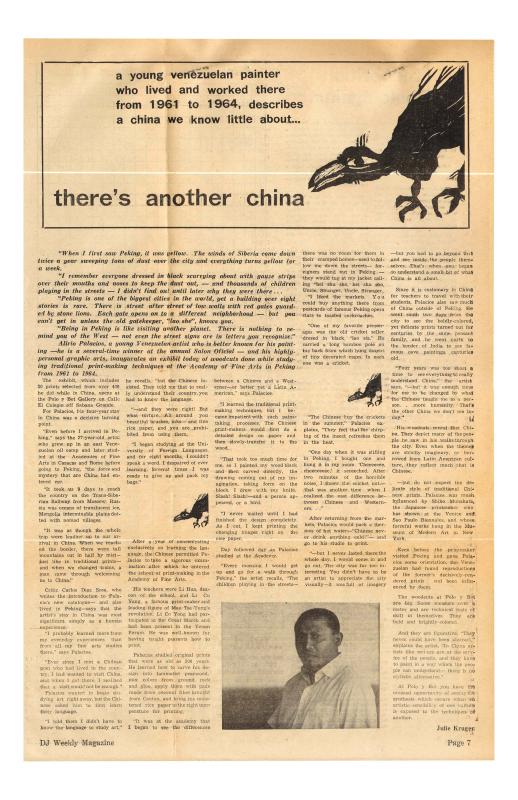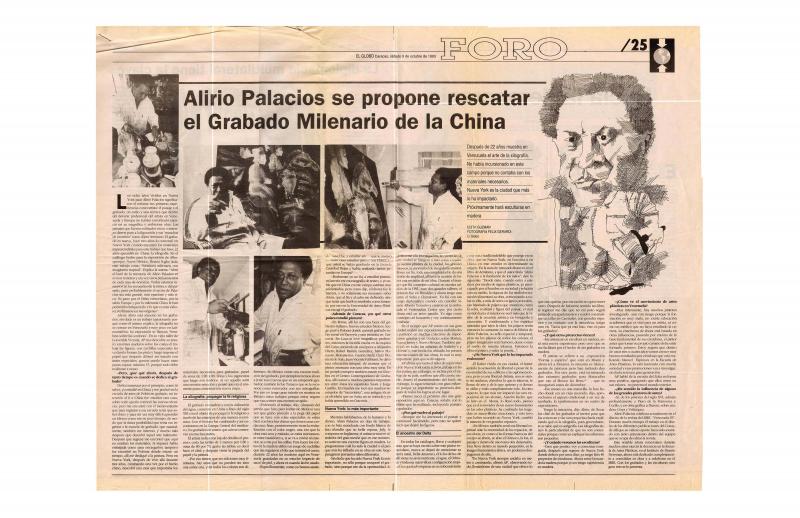In the interview conducted by the journalist Yasmín Monsalve with the Venezuelan artist Alirio Palacios (b. 1944), it is interesting to read the artist’s comments on the technique of woodcuts. The artist elaborates on his thinking about painters who are also printmakers. This is a recurring theme in many interviews of Palacios: the painter/printmaker duality. In a short but forceful paragraph, Palacios explains to Monsalve how artists can produce works in artistic spheres that are so different. He states that in spite of the difference in the techniques, painting “is the product of the application of your hand to what is expressed on canvas. In printmaking, the energy is transmitted to a plate.” Palacios points out a basic difference: in painting, the artist’s hand adds to or incorporates pigments onto the canvas; and on the other hand, woodcuts require the printmaker to take the gouge and remove material in order to carve the image to be printed. The artist also notes the obvious: painting is unique and printmaking [results in] multiples. His painter’s soul, however, leads him to execute one-off woodcuts; he does not wish to print multiples of the work, fearing that it would lose its spirit. To these comments, he adds a thought about the value of a painter being a master of both painting and printmaking; in the artist’s opinion, the two forms of energy are complementary.
[As a reading supplementary to this text, see the essay by Igor Molina, “Alirio Palacios: El arte de la violencia,” which highlights the artist’s training in printmaking in Poland and China in the ICAA digital archive doc. no. 1155701; Lenelina Delgado’s article, “Alirio Palacios: El estado tiene la responsabilidad del futuro del Centro de Diseño” (doc. no. 1155596); two texts by Olga González, “Mezzotintas de Alirio Palacios: El final del aprendizaje gráfico” (doc. no. 1156997) and “Regresa a su país uno de los grabadores más importantes de América Latina” (doc. no. 1155203); a text written in English by Julie Kruger, “There's another China”(doc. no. 1155219); in addition to Edith Guzmán’s interview with the artist, “Alirio Palacios se propone rescatar el grabado milenario de China” (doc. no. 1155809)].






